Page 11
Click monogram to return to home page
In my deciphering the Farnese stemma of six lilies I suspect for the Farnese it meant all of the above, maybe even subtly ‘the divine rule of right’ given Paul III’s power. Paul III Farnese was, along with Pope Julius II, one of the greatest patrons of the arts. Julius II della Rovere brought the three ‘greats,’ Michelangelo, Raphael and Bramante to Rome to rebuild the city to the scale and likeness of ancient Rome and Paul III continued his legacy and building campaigns.
The Farnese were, perhaps, the greatest and grandest family of Rome with surely the most stupendous and magnificent palace in Rome, the Palazzo Farnese. The palazzo is sumptuous, spacious, huge and filled with magnificent ancient sculptures, works of art, frescoes, and coffered ceilings of Lebanese cedar with the stemma carved in coffers alternating with rosettes. The palazzo’s gigantic frieze incorporates the lily alternating with the ancient Roman candelabras. Even the twin fountains (basins moved from the Baths of Caracalla to this piazza) are crowned with travertine lilies that jet water up and then falls into the gray, granite basins below.
Today it is the French Embassy, but the six lilies remain, and the stemma of 3 lilies and crown of the Kings of France is nowhere to be seen; but the French flag is the crucial reminder. Ironic.
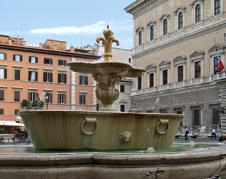
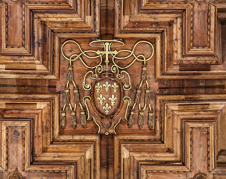
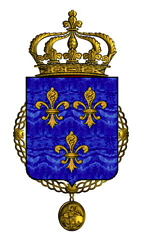
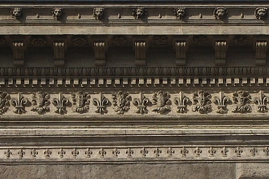
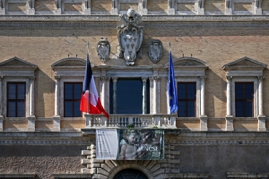
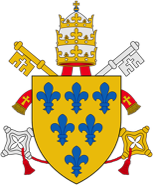
Piazza Farnese, one of twin fountains with the Farnese fleur-de-lis as the water jet, basin from the Baths of Caracalla
Ceiling detail of the Farnese crest with the tassels and broad brimmed cardinals hat, Palazzo Farnese, Rome
Michelangelo's frieze incorporates the fleur-de-lis, detail, Palazzo Farnese, Rome
Palazzo Farnese, Rome (now the French Embassy), detail of central bay flying the French flag, the Farnese seal of 6 fleurs-de-lis and the blue flag for the EU